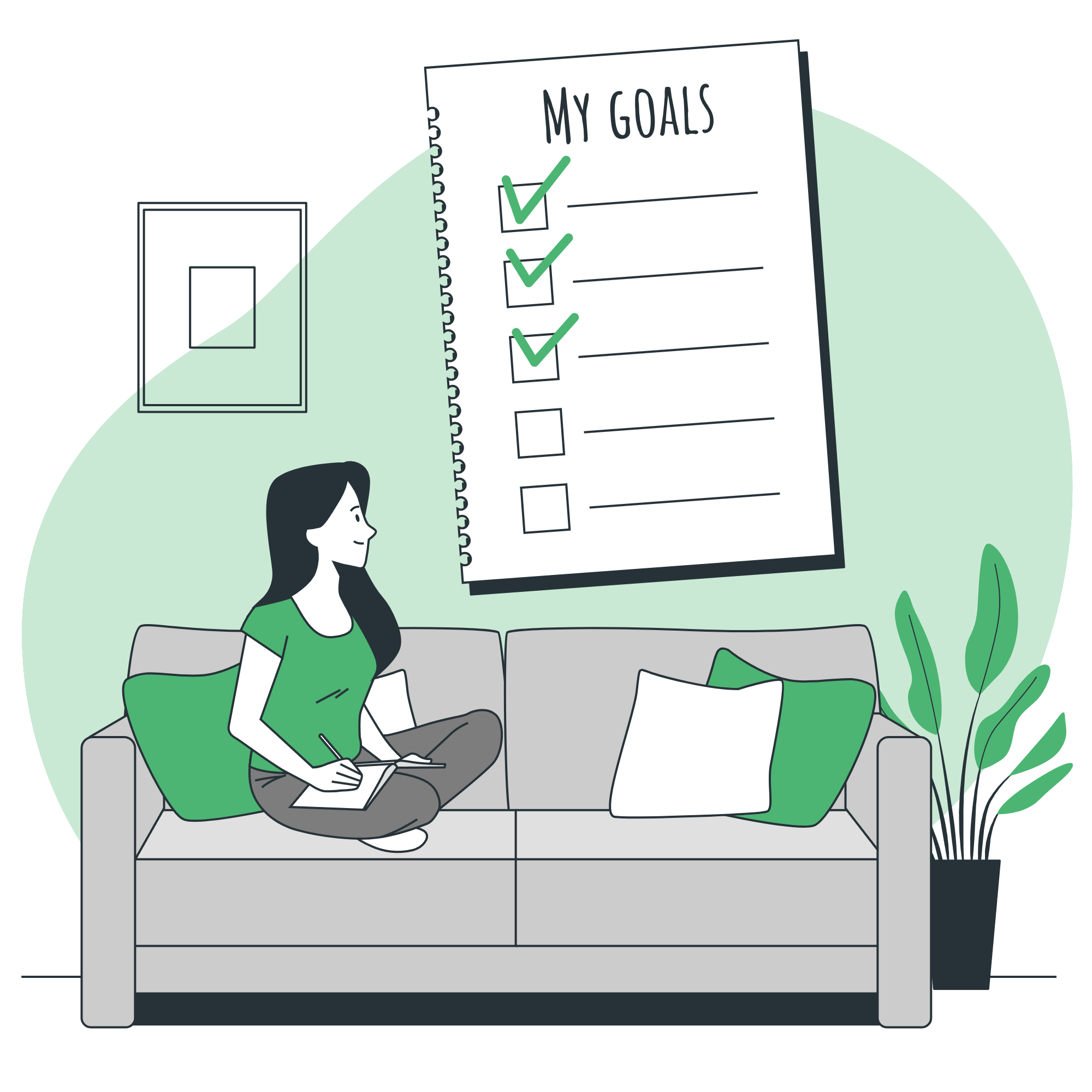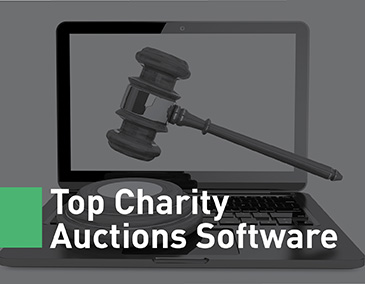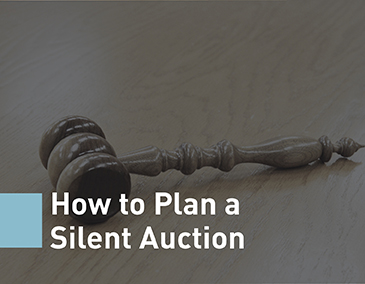Types of Charity Auctions
Live Auctions
Live auctions are exciting events that involve quick bidding and a fast-talking auctioneer with a gavel. They’re what most people think of when auctions come up.
Silent Auctions
During a silent auction, attendees walk around to tables or booths where items or descriptions of items are placed. They place bets on sheets of paper at the tables.
Online Auctions
Online auctions are just like silent auctions except the process takes place on the internet. Nonprofits can set up their own pages or use specific sites.
The Benefits of Charity Auctions
For Nonprofits
Raise a lot of money
When done right, traditional charity auctions can bring in a ton of donations. If you can find unique and desirable items to sell off, you can all but guarantee a successful charity auction.
Get to know donors better
Fundraising events in general are great at bringing donors and nonprofits closer together, but charity auctions can strengthen that bond even more.
Save time
Instead of going around and asking for individual donations week after week, your nonprofit is able to raise a significant amount of money very quickly when you host a charity auction.
For Bidders
Giving to a worthy cause
Instead of going to the mall and buying an item, a donor can bid on it at a charity auction. The money goes toward a nonprofit’s mission instead of a corporation.
Engaging directly with a nonprofit
When donors attend an auction, they get to mingle with nonprofit staff and get a better sense of the organization they’re donating to.
Before the Auction
How to Plan a Charity Auction
Set Your Goal and Budget
Before you start sending out invitations to your charity auction, you need to determine how much money you want to raise and how much you’ll need to spend to make the event a success.
Other variables you’ll need to pin down include:
- The number of items you want to sell.
- How long the auction will take.
- How many donors and volunteers you can invite.
- How much money you can spend on a venue.
Setting your goals and budget a year in advance will give you plenty of time to plan the rest of your charity auction and adjust your initial goals or budget if necessary.
Choose an Auctioneer or Emcee
For live auctions, you’ll need to hire an auctioneer. Silent auctions don’t need someone to actively solicit bids from attendees, but you should still have an emcee to open the bidding, make live appeals, and generally facilitate the silent auction.
A fast-talking, professional auctioneer can really bring your auction to life. People will get caught up in the bidding and have a lot of fun (with your nonprofit bringing in higher donations at the same time!).
Beware, though: professional auctioneers can cost your nonprofit a significant amount of money. Try to find the best auctioneer for the right price. You don’t want all of the money you raise to go toward auctioneer’s fees!
Consider asking these questions as you search:
Ask for Donated Items
In order to have a successful auction, you must have items to auction off!
The most common option for nonprofits is to ask local companies for these items, but you can also ask individuals for donations.
You can try to auction off literally anything, but it’s wise to have items that are unique and desirable. People will be more willing to bid against each other if the item up for grabs is extremely sought after.
You can also sell off experiences or services like a weekend getaway or flying lessons. Get creative with what you put up for sale, and think outside the box!
There are numerous categories of auction items to choose from. Depending on your auction’s theme, you could ask for:
- Arts and cultural items
- Gift baskets
- Technology-related products
- Travel tickets or experiences
- And more!
Your relationship with the person you’re asking will dictate the asking method. A small business owner who was your best friend in high school probably doesn’t need an extremely formal, three-page letter (you might even be able to ask him over lunch one day!). But the CEO of a large corporation with headquarters in your town might require the kind of formality that a letter lends.
Send Out Invitations
The last planning step is deciding who to invite to your charity auction.
You’ll likely be constrained by your venue’s size, so keep that in mind when you’re developing your guest list. Since you’ll need to narrow down your invitations, you want to make sure that the people you do invite will be willing and able to bid highly on your items.
Use prospect research to help choose your attendees. Select donors that have a strong relationship with your organization and have the capacity to keep the bids high.
Then, use direct mail to send out fun, eye-catching invitations. Give each letter a personal touch, and don’t underestimate the impact the right direct mail service provider can have on your innovations’ success.
Promoting Your Charity Auction Effectively
Quickly get in touch with a lot of donors by sending out emails about your auction.
Social Media
Use sites like Facebook, Twitter, and Instagram to increase your reach.
Word of Mouth
People can spread the word about your event just by talking about it.
Phone Calls
Call your major gift donors to personally invite them to your charity auction.
Advertisements
Create banners, rent billboards, and make signs to advertise your event.
Direct Mail
Send out letters, flyers, and pamphlets inviting donors to attend your event.
Asking for Charity Auction Items
Who to Ask
Companies are the most common sources of donated charity auction items.
Depending on your nonprofit’s relationship with local businesses, you may be able to request a meeting with one of the company’s leaders to discuss options for donating items.
Alternatively, you could send out donation request letters asking companies for their support.
In these letters, make sure that you stress the importance of the work your nonprofit does and why you need donations for your auction.
Then, offer the company something in return. Perhaps you give them a free ad in your charity auction’s program. Maybe you feature them as one of your corporate partners on your website.
Whatever you choose, just make sure that your letter doesn’t come across as begging. Give companies an incentive to donate items and services to your charity auction.
Things to Consider
Determining Who to Invite to Your Charity Auction
You won’t be able to invite your entire donor base to your charity auction. Use prospect research to look for the following characteristics:
- Close ties to your organization – Not everyone will want to take a night out of their week to attend a 3-4 hour auction. Those supporters who have demonstrated their commitment to your cause are your best bets for charity auction attendees.
- Capacity to give – If you plan on auctioning off luxury items, you’ll want to invite your major gift donors and loyal supporters who have demonstrated the capacity to give a large amount.
- Willingness to attend events – If you’ve sent out event invitations to a particular donor but they’ve never responded or attended one, they probably won’t be willing to come to a charity auction. You never know of course, but past involvement is a pretty good indicator of future involvement.
Use prospect research to determine who to invite to your charity auction. Look at indicators such as relationship to your organization, capacity to give, and past event attendance to inform your decisions.
Investing in Auction Software
Overview
Charity auction software can take many forms, but its most common use is for silent auction bidding.
Donors can download a charity auction app and, instead of placing their bets on sheets of paper, can bid on items using their phones!
Charity auction software can also help nonprofits:
- Track the details of their auction
- Generate bidding sheets
- Process credit cards
- Send email acknowledgements
- Generate reports
Benefits
Charity auction software takes a lot of the pressure off of nonprofits who host live or silent auctions.
Nonprofits don’t have to worry about processing payments, generating forms, or keeping track of the donated items and can focus on creating a great event for their donors.
For donors, charity auction software–particularly charity auction apps–can make the auction process more competitive and modern. Donors no longer have to fill out sheets of paper with their bids. They can simply use their phones (which they likely brought with them to the auction anyway) to bid on auction items.
Selecting a Tool
Before deciding to invest in charity auction software, you’ll want to ask the following questions:
- Will we use the software only once or will we need it in the years to come?
- Who will be in charge of overseeing the software?
- Can the software by easily implemented with our other fundraising software?
- Does the software handle payment processing?
- What’s our budget?
Leading Auction Software Platforms to Consider
Auctria
Auctria provides a comprehensive suite of features tailored to facilitate various types of auctions, including silent, live, and online formats. Key functionalities include:
- Mobile Bidding Notifications: Automatically alerts bidders when they have been outbid, encouraging increased participation.
- Max Bid Placement: Allows bidders to set a maximum bid, with the system incrementally increasing their bid up to this limit as needed.
- Event Management: Manages ticket sales and seating arrangements for in-person events.
- Customizable Event Websites: Offers customizable templates to create branded event websites, complete with image and video integration to tell your organization’s story.
These features are designed to streamline the auction process, boost bidder engagement, and ultimately increase fundraising outcomes.
CharityAuctionsToday
CharityAuctionsToday offers a user-friendly platform equipped with a variety of tools to support successful fundraising auctions. Notable features include:
- Mobile Kiosk: Provides a solution for bidders without smart devices, allowing them to participate through a bidding kiosk.
- Pre-Registration: Allows guests to pre-register, streamlining the check-in process and encouraging early engagement.
- Credit Card Processing: Facilitates secure payment processing, ensuring a smooth transaction experience for donors.
- Social Media Integration: Empowers supporters to share the auction on social media platforms, potentially expanding reach and attracting new bidders.
These functionalities aim to enhance the efficiency of auction management and provide a seamless experience for participants.
SilentAuctionPro
Silent Auction Pro specializes in event management software tailored for fundraising auctions, offering a range of features to support both in-person and online events. Leading tools include:
- Ticketing and Check-In: Manages ticket sales and provides efficient check-in processes for attendees.
- Seating Arrangements: Includes drag-and-drop tools for organizing seating, accommodating guest preferences, and optimizing event flow.
- Bidding Options: Supports traditional paper-based bidding as well as online bidding, catering to diverse event formats.
- Reporting and Analytics: Provides detailed reports on revenue, donor participation, and overall event performance, aiding in post-event analysis and future planning.
These features are designed to streamline event logistics, enhance bidder engagement, and maximize fundraising potential.
During the Auction
Keeping Your Charity Auction Organized
Keep your charity auction organized during check-in by:
- Determining seating charts ahead of time.
- Having volunteers check in your donors.
- Using software to keep track of who has already checked in.
After the event has ended, keep things organized by:
- Getting the right items to their new owners.
- Accepting payments quickly and easily.
- Remembering to thank your donors before they leave.
Other Ways to Raise Money During an Auction
Raffles
You can also sell raffle tickets during your silent or live auction to generate more revenue.
You can raffle off an item, but you could also try a 50/50 raffle, with the winner taking half of the money raised during the raffle.
Raffles tend to go well with fundraising events anyway. Try implementing a raffle during your next live or silent auction!
Direct Asks
At some point during the night, your auctioneer or emcee can ask attendees for a donation.
You can either have a donation booth set up or, if you have it, encourage bidders to make use of your text-to-give software.
A direct appeal is a great way to boost revenue during your auction while encouraging everyone to get into the giving spirit.
Matching Gifts
If you’re collecting donations during your event, you don’t want to overlook the chance for corporate matching opportunities!
Thousands of companies offer generous giving programs where they double the donations their employees make to nonprofits like yours. However, many let their matching gift potential go unclaimed without an added push. Use your auction as a chance to promote matching gifts and get more dollars toward your cause!
Resources and Tips
Charity Auction Best Practices
Stick to Your Budget
Charity auctions planners can sometimes get caught up in ordering flowers, decorations, food, and bidding paddles, that they forget the budget!
Your charity auction is supposed to help your organization raise money, not put you in the red.
Make sure that you make a budget early and stick to it throughout the planning and execution stages.
Promote Your Items Early
Don’t wait until the night of your silent or live auction to get people excited about the items and experiences that they’ll be able to bid on.
You should promote the best items that will be up for grabs so that bidders will want to come.
This will encourage more attendees to bid on items during the auction and get the word out about your event.
Procure Unique Items
The more unique and appealing your items are, the better chance you’ll have of selling them for a higher price.
One-of-a-kind items and experiences are the best auction items that you could procure.
Ask local businesses and individuals to donate unique items and make sure to thank them for their contribution!
Pick a Great Venue
A spacious and inviting venue will make your bidders feel comfortable during your auction.
You also want to make sure that there is adequate room for tables (for a silent auction) or a stage (for a live auction).
Use Mobile Bidding Software
Mobile bidding software solutions can help take your silent auction to the next level and raise more money. These tools allow attendees to bid directly from their mobile devices, potentially opening your auction to participants located all over the world (if you decide to host a virtual or hybrid event).
Choose a piece of software that is easy for your bidders to use but that doesn’t cost your organization an arm and a leg.
Make a Live Appeal
Not everyone who attends your auction will win an item and give money to your organization.
That’s why it’s crucial to make a live appeal at some point in the evening. That way, each attendee can support your cause!
Charity Auctions and IRS Compliance
Donors who win items at a charity auction may claim a charitable contribution deduction. However, these deductions are only applicable if the amount the donor paid is more than its fair market value. Additionally, the donor has to prove that they were aware that value of the item was less than the amount they paid for it. For instance, a donor could use an auction catalog to show that the estimated value of an item was less than the amount they donated. The difference between the two amounts can constitute a charitable contribution deduction.
Your organization must follow IRS guidelines regarding supporters who donate items for your charity auction. Many nonprofits forget about this area of compliance, but it’s just as important as bidder compliance. If a donor contributes an item that has a fair market value of $250 or greater, you must provide them with a donation receipt. This receipt must state that no goods or services were given in exchange for the donation but it shouldn’t contain the value of the item itself. If an item is valued at $5,000 or more, the donor can submit a federal Form 8283 for the nonprofit to sign once the item is sold.
Expert Advice
Nonprofit auctions are a great way to raise money but can get extremely complex to manage. It’s important to think through ways that systems and software can make it the entire process easier for your organization.
The more festive the atmosphere, the higher the bidding will go!
Experiences and one-of-a-kind items go over best. Think trips to exotic locales, golf with professional athletes, dinners from celebrity chefs.
To make these events a little more fun–and to make a little extra money for your fundraiser–your organization can sell snacks and refreshments while the bidding is going on.
Auction Checklists
Silent Auction Checklist
Venue
If you want your supporters to stay and bid during your silent auction, you’ll need to host it in a welcoming and appropriate venue.
This will largely depend on what is available in your area, but get as creative as you want!
Bid Sheets or Software
If you go the traditional silent auction route, you’ll need to place bid sheets and pens on the tables in front of your auction items.
If you go digital, make sure that you have a great mobile bidding platform for supporters to use.
Emcee
Your emcee is like the auctioneer for your silent auction.
He or she will make general announcements, encourage bidding, and alert bidders when the auction has ended.
Programs
An auction program tells your bidders what items are for sale.
It usually includes pictures, descriptions, fair market values, and other information about your silent auction items.
Online Auction Checklist
Online Auction Software
The most crucial necessity for a successful online auction is software.
Your auction software will be able to generate a website based on the items that you procure, and your donors will be able to easily bid on items from anywhere in the world!
Item Images
Make sure to upload high-quality images of your auction items to your site.
Since your bidders won’t be able to see the items in-person, it’s important that you have accurate representations of the items you’re selling. You should also include item descriptions.
Ways to Ship
Once the bidding is closed down, make sure that bidders get their items in a timely fashion.
Use a standard or expedited shipping service. Your software might even give bidders an option for the shipping service they’d prefer.
Team of Staff Members
Just because an online auction isn’t a physical event doesn’t mean that you don’t need a reliable team!
You’ll still need a group of staff members to market your online auction and procure the items that you list on your auction website.
Live Auction Checklist
Auctioneer
Your auctioneer will keep the bidding rolling at a fast pace and will encourage attendees to bid on items.
You can enlist the help of a volunteer, but it’s more fun to hire a fast-talking auctioneer who has experience.
Bidding Paddles
Bidding paddles are what live auction attendees use to signal to the auctioneer that they would like to bid on an item.
Your bidding paddles should be sturdy and display your nonprofit’s logo somewhere on them.
Event Programs
Bidders will want to know what items are up for grabs and how the auction is going to work.
Your programs can also be where you highlight your sponsors, donors, and other supporters.
Auction Spotters
If you’re hosting a small auction, your auctioneer may be able to spot everyone who makes a bid.
But if your event is larger, you’ll need auction spotters to point out who is bidding to the auctioneer.
Additional Auction Resources
Charity auctions are a powerful and engaging way for nonprofits to raise funds, connect with donors, and further their mission. By leveraging the right strategies—such as selecting the best auction format, utilizing corporate sponsorships, and incorporating effective volunteer and donor appreciation efforts—organizations can maximize their fundraising potential and create a memorable experience for supporters.
Ultimately, a well-planned charity auction is more than just a fundraiser—it’s an opportunity to inspire generosity, strengthen community connections, and fuel your nonprofit’s mission for years to come. With the right approach, your organization can host an auction that not only raises bountiful bids but also leaves a lasting impression on donors and beneficiaries alike.
Charity Auction Items
Need some great ideas for charity auction items that will inspire bids?
Check out our list of amazing charity auction item ideas for live, silent, and online events!
Charity Auction Software
It’s hard to run an auction without software.
If you’re in the market for charity auction software, make sure to take a look at our list of leading software providers.
Planning Silent Auctions
Silent auctions are great fundraising methods.
If you’re planning a silent auction any time soon, make sure to check out this guide to planning a successful silent auction.









